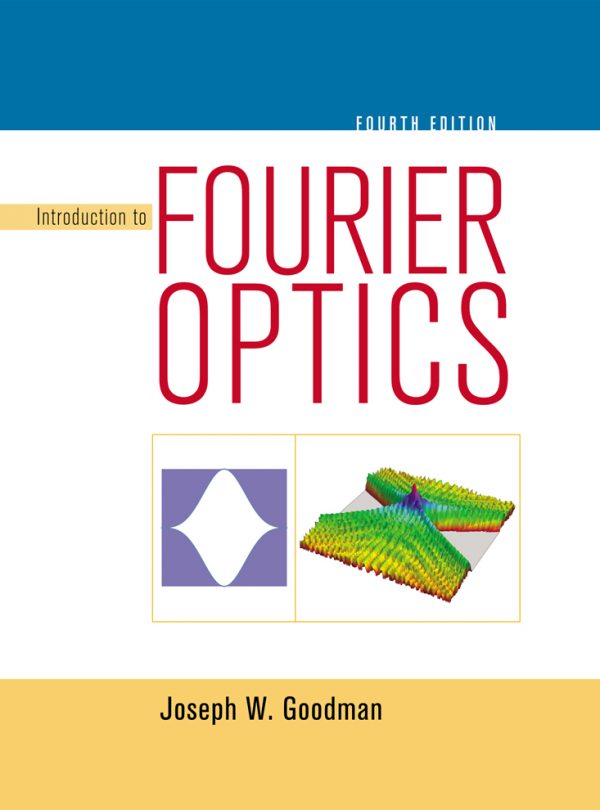Johannes Karl Fink9780815515159, 0-8155-1515-4
Table of contents :
Cover Page……Page 1
Title Page……Page 2
ISBN: 0815515154……Page 3
PDL Editor’s Preface……Page 4
Preface……Page 6
HOW TO USE THIS BOOK……Page 7
Acknowledgements……Page 8
(Plastics Design Library)……Page 9
1 Unsaturated Polyester Resins……Page 12
2 Polyurethanes……Page 13
3 Epoxy Resins……Page 14
4 Phenol/formaldehyde Resins……Page 15
5 Urea/formaldehyde Resins……Page 17
7 Furan Resins……Page 18
8 Silicones……Page 19
9 Acrylic Resins……Page 20
11 Bismaleimide Resins……Page 21
12 Terpene Resins……Page 22
13 Cyanoacrylates……Page 23
15 Reactive Extrusion……Page 24
16 Compatibilization……Page 25
17 Rheology Control……Page 26
18 Grafting……Page 27
19 Acrylic Dental Fillers……Page 28
Index……Page 29
1.1 History……Page 30
1.2.1 Monomers for the Unsaturated Polyester (UP)……Page 31
1.2.2 Vinyl Monomers……Page 37
1.2.3 Specialities……Page 39
1.2.4 Synthesis……Page 42
1.2.5 Manufacture……Page 44
1.3.1 Inhibitors……Page 46
1.3.3 Emission Suppressants……Page 47
1.3.4 Fillers……Page 48
1.3.5 Reinforcing Materials……Page 52
1.3.6 Mold Release Agents……Page 54
1.3.7 Low-profile Additives……Page 55
1.3.8 Interpenetrating Polymer Networks……Page 57
1.3.9 Polyurethane Hybrid Networks……Page 59
1.3.10 Flame Retardants……Page 60
1.4 Curing……Page 63
1.4.1 Initiator Systems……Page 64
1.4.2 Promoters……Page 66
1.4.4 Polymerization……Page 69
1.5.1 Structure Properties Relationships……Page 73
1.5.3 Recycling……Page 74
1.6 Applications and Uses……Page 75
1.6.3 Reinforced Materials……Page 76
1.6.4 Coatings……Page 77
1.7 Special Formulations……Page 78
1.7.2 Fluoro Copolymers……Page 79
1.7.3 Toner Compositions……Page 80
1.7.6 Bone Cement……Page 81
References……Page 82
2.1 History……Page 98
2.2.1 Diisocyanates……Page 99
2.2.2 Polyols……Page 113
2.2.3 Other Polyols……Page 119
2.2.4 Polyamines……Page 120
2.2.6 Catalysts……Page 121
2.2.7 Blowing……Page 123
2.3.1 Fillers……Page 138
2.3.2 Reinforcing Materials……Page 139
2.3.3 Flame Retardants……Page 140
2.3.4 Production Data……Page 142
2.4.1 Recycling……Page 143
2.5.1 Mechanical Properties……Page 144
2.6.1 Casting……Page 145
2.7.1 Interpenetrating Networks……Page 146
2.7.3 Medical Applications……Page 147
2.7.4 Waterborne Polyurethanes……Page 149
2.7.7 Electrolytes……Page 151
References……Page 153
3.2.1 Epoxides……Page 168
3.2.2 Phenols……Page 169
3.2.3 Specialities……Page 173
3.2.4 Manufacture……Page 175
3.3.1 Toughening Agents……Page 180
3.3.2 Antiplasticizers……Page 188
3.3.4 Adhesion Improvers……Page 189
3.3.6 Reinforcing Materials……Page 190
3.3.7 Interpenetrating Polymer Networks……Page 193
3.3.8 Organic and Inorganic Hybrids……Page 196
3.3.9 Flame Retardants……Page 197
3.4.1 Initiator Systems……Page 202
3.4.2 Compounds with Activated Hydrogen……Page 203
3.4.3 Coordination Catalysts……Page 211
3.4.4 Ionic Curing……Page 212
3.4.5 Photoinitiators……Page 215
3.4.6 Derivatives of Michler’s Ketone……Page 218
3.4.8 Curing Kinetics……Page 222
3.4.10 Microwave Curing……Page 226
3.5 Properties……Page 227
3.5.1 Hybrid Polymers and Mixed Polymers……Page 228
3.5.2 Recycling……Page 229
3.6.4 Molding Techniques……Page 232
3.7.1 Development of Formulations……Page 233
3.7.4 Swellable Epoxies……Page 234
3.7.7 Electronic Packaging Application……Page 235
3.7.9 Optical Resins……Page 236
3.7.10 Reactive Solvents……Page 239
3.7.11 Encapsulated Systems……Page 240
3.7.13 Epoxy Resins as Compatibilizers……Page 241
References……Page 244
4. Phenol/formaldehyde Resins……Page 270
4.1 History……Page 271
4.2 Monomers……Page 272
4.2.2 o-Cresol……Page 273
4.2.3 Formaldehyde……Page 274
4.2.5 Production Data of Important Monomers……Page 275
4.2.7 Specialities……Page 276
4.2.8 Synthesis……Page 278
4.2.9 Catalysts……Page 280
4.2.10 Manufacture……Page 283
4.3.1 Low Emission Types……Page 284
4.3.2 Boric Acid-modified Types……Page 286
4.3.4 Flame Retardants……Page 288
4.4.1 Model Studies……Page 289
4.4.2 Experimental Design……Page 290
4.4.6 Novolak Curing Agents……Page 291
4.4.7 Resol Resin Hardeners……Page 292
4.4.9 Ashless Resol Resins……Page 293
4.4.10 Recycling……Page 294
4.5.1 Binders for Glass Fibers……Page 295
4.5.3 Novolak Photoresists……Page 297
4.5.5 Urethane-modified Types……Page 298
4.5.6 Carbon Products……Page 299
4.6.2 Ion Exchange Resins……Page 301
4.6.6 Foams……Page 302
4.7.2 Salt Tolerance……Page 303
References……Page 304
5.2.1 Formaldehyde……Page 312
5.2.5 Specialities……Page 313
5.2.6 Polymerization……Page 315
5.3.1 Modifiers……Page 319
5.4 Curing……Page 320
5.5 Measurement of Curing……Page 321
5.6.2 Storage……Page 322
5.8.1 Ready-use Powders……Page 323
5.8.4 Soil Amendment……Page 324
References……Page 325
6.2.1 Melamine……Page 328
6.2.3 Synthesis……Page 329
6.3 Properties……Page 331
6.4.1 Wood Impregnation……Page 332
References……Page 333
7.2 Monomers……Page 336
7.2.1 Furfural……Page 337
7.2.4 Synthesis……Page 338
7.3.1 Reinforcing Materials……Page 339
7.4 Curing……Page 340
7.4.3 Ultrasonic Curing……Page 341
7.6.1 Carbons……Page 342
7.6.2 Chromatography Support……Page 343
7.6.3 Composite Carbon Fiber Materials……Page 344
7.6.5 Glass Fiber Binders……Page 345
7.6.8 Photosensitive Polymer Electrolytes……Page 346
References……Page 348
8.1 History……Page 350
8.2.3 Hydrogen Silsesquioxanes……Page 351
8.2.4 Alkoxy Siloxanes……Page 353
8.2.6 Silaferrocenophanes……Page 354
8.2.7 Synthesis……Page 356
8.2.8 Manufacture……Page 359
8.3.2 Fillers……Page 360
8.4.1 Curing by Condensation……Page 361
8.5.1 Condensation Crosslinking……Page 363
8.5.3 Hydrosilylation Crosslinking……Page 364
8.6.2 Thermal Properties……Page 365
8.6.6 Gas Permeability……Page 367
8.7.2 Release Agents……Page 369
8.7.5 Medical Applications……Page 370
8.8.2 Thermal Transfer Ribbons……Page 371
8.8.4 Plasma Grafting……Page 372
8.8.5 Antifouling Compositions……Page 373
References……Page 374
9.1 History……Page 378
9.2.1 Specialities……Page 379
9.2.2 Synthesis……Page 381
9.2.3 Manufacture……Page 382
9.3.2 Flame Retardants……Page 385
9.4.1 Initiator Systems……Page 387
9.5.1 Electrical Properties……Page 389
9.6.1 Acrylic Premixes……Page 390
9.6.2 Protective Coatings in Electronic Devices……Page 391
9.6.4 Solid Polymer Electrolytes……Page 392
9.7.2 Marble Conservation……Page 394
9.7.4 Drug Release Membranes……Page 395
9.7.8 Laminated Films……Page 396
9.7.9 Ink-jet Printing Media……Page 397
References……Page 398
10.2.1 Specialities……Page 402
10.2.2 Synthesis……Page 404
10.3.1 Fillers……Page 406
10.3.2 Flame Retardants……Page 407
10.4.1 Thermal Curing……Page 408
10.4.2 Curing with Epoxy Groups……Page 410
10.4.3 Curing with Unsaturated Compounds……Page 411
10.4.4 Initiator Systems……Page 413
10.6.2 Electronic Industry……Page 414
10.7.2 Blends with Epoxies……Page 415
10.7.3 Bismaleimide Triazine Resins……Page 416
10.7.4 Siloxane Crosslinked Resins……Page 417
10.7.5 Alloys with Thermoplastics……Page 418
References……Page 420
11.1.2 2,2′-Diallyl bisphenol A……Page 426
11.1.4 Bismaleimide Bisimides……Page 429
11.1.6 Phosphorous-containing Monomers……Page 431
11.1.8 Reactions of Maleimides……Page 434
11.1.9 Specialities……Page 441
11.2.1 Tougheners and Modifiers……Page 446
11.2.3 Titanium dioxide……Page 450
11.2.5 Flame Retardants……Page 451
11.3.2 Polymerization……Page 452
11.3.3 Interpenetrating Networks……Page 458
11.4.2 Water Sorption……Page 460
11.6.1 Adhesives……Page 462
11.6.5 Nonlinear Optical Systems……Page 464
References……Page 467
12.2 Monomers……Page 476
12.2.1 Resin……Page 477
12.2.4 Production Data of Important Monomers……Page 479
12.3.1 Homopolymers……Page 480
12.3.3 Terpene Phenolic Resins……Page 481
12.3.4 Terpene Maleimide Resins……Page 483
12.4.1 Solubility……Page 484
12.4.2 Adhesive Properties……Page 485
12.4.3 Characterization……Page 487
12.5 Applications and Uses……Page 488
12.5.2 Pressure-sensitive Adhesives……Page 489
12.5.3 Polyacrylate Hot-melt Pressure-sensitive Adhesives……Page 490
12.5.4 Hot-Melt Adhesives……Page 491
12.5.6 Sizing Agents……Page 492
12.5.8 Chewing Gums……Page 494
12.6.1 Toughener for Novolaks……Page 495
References……Page 496
13.1.1 Synthesis……Page 500
13.1.2 Crosslinkers……Page 501
13.1.3 Commercial Products……Page 502
13.2.1 Plasticizers……Page 504
13.2.2 Accelerators……Page 506
13.2.4 Stabilizers……Page 509
13.2.5 Primers……Page 511
13.2.6 Diazabicyclo and Triazabicyclo Primers……Page 512
13.2.7 Polyamine Dendrimers……Page 513
13.3.1 Photo Curing……Page 514
13.5.1 Manicure Composition……Page 515
13.5.2 Tissue Adhesives……Page 516
References……Page 518
14. Benzocyclobutene Resins……Page 522
14.1.3 BCB End-capped Polyimides……Page 527
14.3 Applications and Uses……Page 530
14.3.1 Applications in Microelectronics……Page 531
References……Page 533
15. Reactive Extrusion……Page 536
15.1 Extruder……Page 537
15.1.2 Ceiling Temperature……Page 539
15.1.3 Strategy of Reactive Extrusion……Page 540
15.2 Compositions of Industrial Polymers……Page 541
15.2.3 Polyamide 12……Page 542
15.2.5 Poly(carbonate)……Page 543
15.3 Biodegradable Compositions……Page 546
15.3.1 Poly(lactide)s……Page 548
15.3.3 Poly(e-caprolactone)……Page 550
15.3.6 Blends of Protein and Polyester……Page 552
15.4.2 Modified Poly(ethylene terephthalate)……Page 553
15.5.1 Transesterification……Page 554
References……Page 555
16. Compatibilization……Page 560
16.2.1 Thermodynamic Compatibility……Page 561
16.2.3 Particle Size……Page 562
16.2.6 Technological Compatibility……Page 563
16.3.2 Filler Materials without Chemical Compatibilizers……Page 567
16.3.3 Modified Inorganic Fillers……Page 568
16.3.5 Thermoplastic Elastomers……Page 569
16.3.7 Poly(ethylene)/Wood Flour Composites……Page 570
16.3.9 Block Copolymers……Page 571
16.3.11 Starch……Page 573
16.4 Reactive Compatibilization……Page 574
16.4.1 Coupling Agents for Compatibilization……Page 577
16.4.3 Poly(ethylene) and Polyamide 6……Page 578
16.4.4 PEO and PBT……Page 580
16.4.7 Sisal Fibers……Page 581
16.4.8 Thermotropic Liquid Crystalline Polyesters……Page 582
16.4.9 Ionomers and Ionomeric Compatibilizers……Page 583
16.4.10 Poly(styrene)……Page 585
16.4.11 Polyolefins/Poly(ethylene oxide)……Page 587
16.4.14 PE and EVA……Page 588
16.4.16 NBR and EPDM……Page 589
16.4.19 Bisphenol A-poly(carbonate) and ABS Copolymers……Page 590
16.4.21 Polyamides……Page 592
16.4.22 Polyethers……Page 593
16.5.1 Mechanisms……Page 595
16.5.3 Functionalization of Olefinic End Groups of Poly-(propylene)……Page 598
16.5.5 Polyfunctional Polymers and Modified Polyolefin……Page 602
References……Page 603
17.2 Rheology Control Techniques……Page 616
17.2.1 Pelletizing……Page 618
17.3.1 Hydroperoxides……Page 619
17.3.2 Peroxides……Page 620
17.3.4 Ketone Peroxides……Page 622
17.3.7 Properties of Peroxides……Page 624
17.3.8 Azo Compounds……Page 629
17.5 Mechanism of Degradation……Page 630
17.7 Irregular Flow Improvement……Page 634
17.8 Heterophasic Copolymers……Page 635
17.9.2 Effect of MFR on Temperature and Residence Time……Page 637
References……Page 638
18.1.1 Parameters that Influence Grafting……Page 640
18.1.3 Grafting Using Stable Radicals……Page 643
18.2.1 Monomers for Grafting onto Polyolefins……Page 645
18.2.2 Mechanism of Melt Grafting……Page 646
18.2.4 Viscosity……Page 647
18.2.6 Effect of Initiator Solubility……Page 649
18.2.9 Radical Grafting of Polyolefins with Diethyl Maleate……Page 651
18.2.11 Inhibitors for Crosslinking……Page 652
18.2.12 Special Initiators……Page 653
18.2.14 Polyolefins Grafted with Itaconic Acid Derivatives……Page 658
18.2.16 Oxazoline-modified Polyolefins……Page 659
18.2.18 Ethyl Diazoacetate-modified Polyolefins……Page 660
18.2.19 Grafting Antioxidants……Page 661
18.2.20 Comonomer Assisted Free Radical Grafting……Page 662
18.2.22 Characterization of Polyolefin Graft Copolymers……Page 665
18.3.2 Multifunctional Monomers for PP/PS Blends……Page 666
18.3.4 n-Butyl methacrylate Grafted onto PVC……Page 667
18.3.6 Starch Grafted Acrylics……Page 668
18.3.8 Polyesters and Polyurethanes……Page 669
18.4.1 Ene Reaction with Poly(propylene)……Page 671
18.4.3 Diels-Alder Reaction……Page 672
18.5.1 Grafting onto Poly(ethylene)……Page 673
18.5.2 Grafting onto Poly(tetrafluoroethylene)……Page 676
References……Page 678
19. Acrylic Dental Fillers……Page 686
19.2 Polymeric Composite Filling Materials……Page 687
19.3.1 Acrylics and Methacrylics……Page 688
19.3.2 Cyclic Monomers……Page 694
19.3.3 Epoxy Monomers……Page 695
19.4.1 Chemical Curing Systems……Page 697
19.4.2 Photo Curing……Page 702
19.4.4 Dual Initiator Systems……Page 705
19.6.1 Fillers and Reinforcing Materials……Page 706
19.6.3 Photostabilizers……Page 710
19.6.6 Adhesion Promoter……Page 711
19.7.1 Water Sorption……Page 715
19.8.1 Filling Techniques……Page 716
References……Page 717
20. Toners……Page 722
20.1 Toner Components……Page 723
20.2 Toner Resins……Page 724
20.3.1 Suspension Polymerization……Page 725
20.3.3 Unsaturated Ester Resins……Page 726
20.3.4 Toner Resins with Low Fix Temperature……Page 727
20.3.5 Toners for Textile Printing……Page 729
References……Page 730
A……Page 732
B……Page 733
D……Page 735
E……Page 738
F……Page 739
H……Page 740
I……Page 741
M……Page 742
O……Page 744
P……Page 745
R……Page 748
T……Page 749
Z……Page 752
A……Page 753
B……Page 754
C……Page 759
D……Page 761
E……Page 767
G……Page 769
H……Page 770
M……Page 772
N……Page 775
P……Page 776
S……Page 780
T……Page 781
V……Page 784
Z……Page 785
A……Page 786
B……Page 787
C……Page 789
D……Page 793
E……Page 794
F……Page 795
G……Page 796
I……Page 797
M……Page 799
N……Page 801
P……Page 802
R……Page 804
S……Page 805
T……Page 807
V……Page 808
Z……Page 809







Reviews
There are no reviews yet.